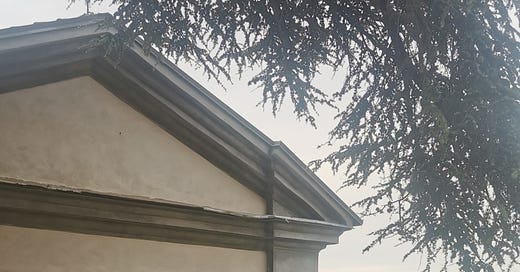2018 is not a great vintage. The wines are not powerful or structured, elegant or refined; they are ready to drink.
Overall, we can consider it a balanced vintage where the producers' choices are extremely evident. What in similar vintages, like 2012, was a problem (many boring wines out there) in 2018 is a blessing because the quality of the region went drastically up. Even mainstream producers, that were considered in the past too big for quality, are now making wines capable of sharing the gospel with the small old-schoolers like the great Sarmassa from Marchesi di Barolo and the apocalyptic-first-vintage-masterpiece Rocche di Castiglione from Ceretto.
The aftermath of the torrid 2017 and the heavy and constant rain in May forced winemakers to make choices that led to different views of the vintage: Federico Scarzello sees similarities with the 2014, Nicola Oberto (Trediberri) with the 2012, Andrea Marchetti (Marcarini) with the 2006, Alex Sanchez (Brovia) with the 2008 and Fabio Alessandria (G.B. Burlotto) thinks of it as a new type of vintage that will eventually start a modern style of drinkable Nebbiolos. Turns out that their wines smell and taste like those vintages; that’s why judging 2018 is so difficult and somehow misleading.
This vintage rewarded the producers who worked less in the winery and more in the vineyard leading to expressive wines: Diego Morra’s Monvigliero and Castello di Perno’s Castelletto are the best wines made, so far, by those estates because the cru’s character is stronger than their previous vintages.
The market approach was what tore down the vintage; producers should have dropped prices and filled the restaurants leaving the collectors with a 2019’s fever. Clearly that didn’t happen (financial problems or greed?) and the attention went toward scores that destroyed many great wines. One in particular has been so unfairly judged that I felt the need to write a tasting note and give it my own score.
2018 Villero, Brovia (tasted 18th May at the estate)
Pale ruby with a dark rim. Ripe strawberry and dark cherry. Fresh ground beef and cloves. You can feel the warmth of the alcohol on the nose but on the palate the wine is balanced with velvety tannins and a medium plus finish. The character of Villero is here: meaty, warm, ripe but also fresh, modern, approachable. Simply great. Drink slightly chilled. 96/100
Again, this is just my opinion and needs to be compared with your own experience. Have you drunk any Barolo 2018? What do you think of it? Write a comment down here and let's talk about it!







Well, the fact is that I truthfully need to drink all the other vintages and have a bigger picture on it. On the spot…same as I said before to you for what I’ve tried. But it can be read in a different key as you teach me my friend! Great article
Great analysis and write-up.
I've been lucky enough to try a fair amount of 2017's and 2018's and the biggest difference I've noted is the lack of depth in the 18's. 2017 might ultimately shake out to be a better vintage than some pinned it for. I recall most critics deeming the vintage a huge letdown in large part to the weather. From what I've tasted, the wines are rustic, structured, but just not as ripe and focused as 2016.
With 2018, I've been told by many that this is a "restaurant vintage", a term I consider to be a nice way of saying the wines aren't particular thought-provoking.
Nonetheless, I'm eager to taste more 2018 and continue to mold my opinion.